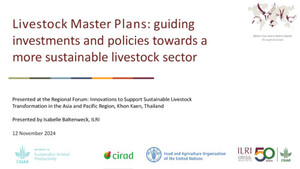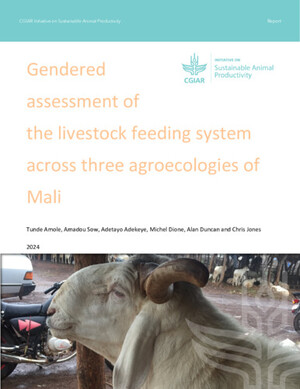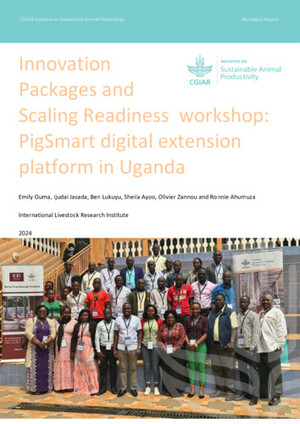
Genetic evaluation of growth of Kenya Boran cattle using random regression models
Abstract
Data consisting of 18 884 weight records collected from 1273 Boran cattle from birth to 24 months of age were used to estimate covariance functions and genetic parameters for growth of Boran cattle using random regression (RR) models under a situation of small herd size and inconsistent recording. The RR model fitted quadratic Legendre polynomials of age at recording for additive genetic and permanent environmental effects. Genetic variance increased from birth, reaching an asymptotic value at 455 days and was maximum at 525 days of age after which it gradually dropped. Permanent environmental variance increased throughout the trajectory. Estimates of temporary environmental variance were heterogeneous across ages. Direct heritability and permanent environmental variance as a proportion of phenotypic variance fluctuated greatly during the early ages but later stabilized at intermediate to later ages; the estimates ranged from 0.11 to 0.33 and from 0.18 to 0.83, respectively. Genetic correlation estimates were positive, ranging from 0.10 to unity. The estimates declined with increasing in lag between the age points. Phenotypic correlation pattern was erratic between early ages, negatively low (−0.02) between the extreme data points and moderate to highly positive (>0.50) between intermediate and later points, with prominent spikes along the diagonal. It is concluded that RR models have potential for modelling growth of Boran cattle, notwithstanding conditions of small herd sizes and inconsistent recording.
Citation
Wasike, C.B.; Indetie, D.; Pitchford, W.S.; Ojango, J.M.K.; Kahi, A.K. 2007. Genetic evaluation of growth of Kenya Boran cattle using random regression models. Tropical Animal Health and Production 39(7):493-505.










